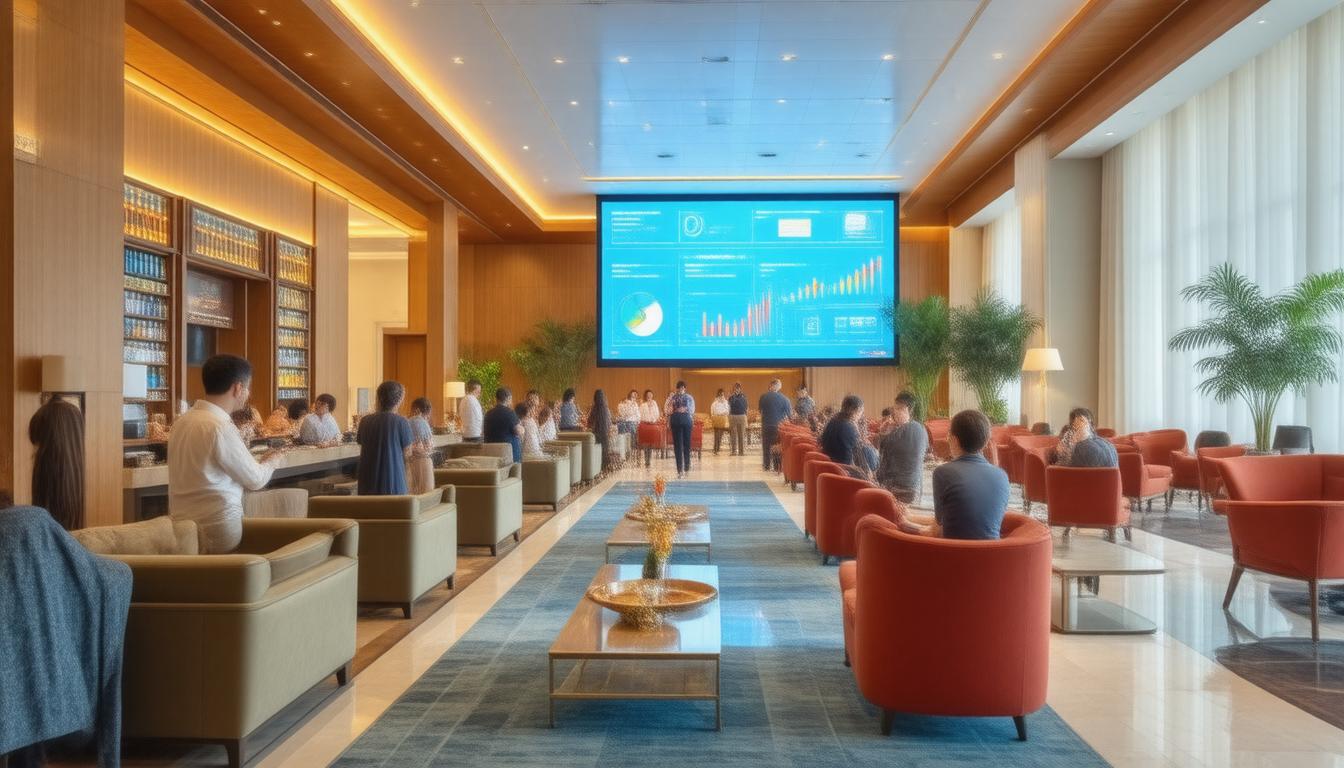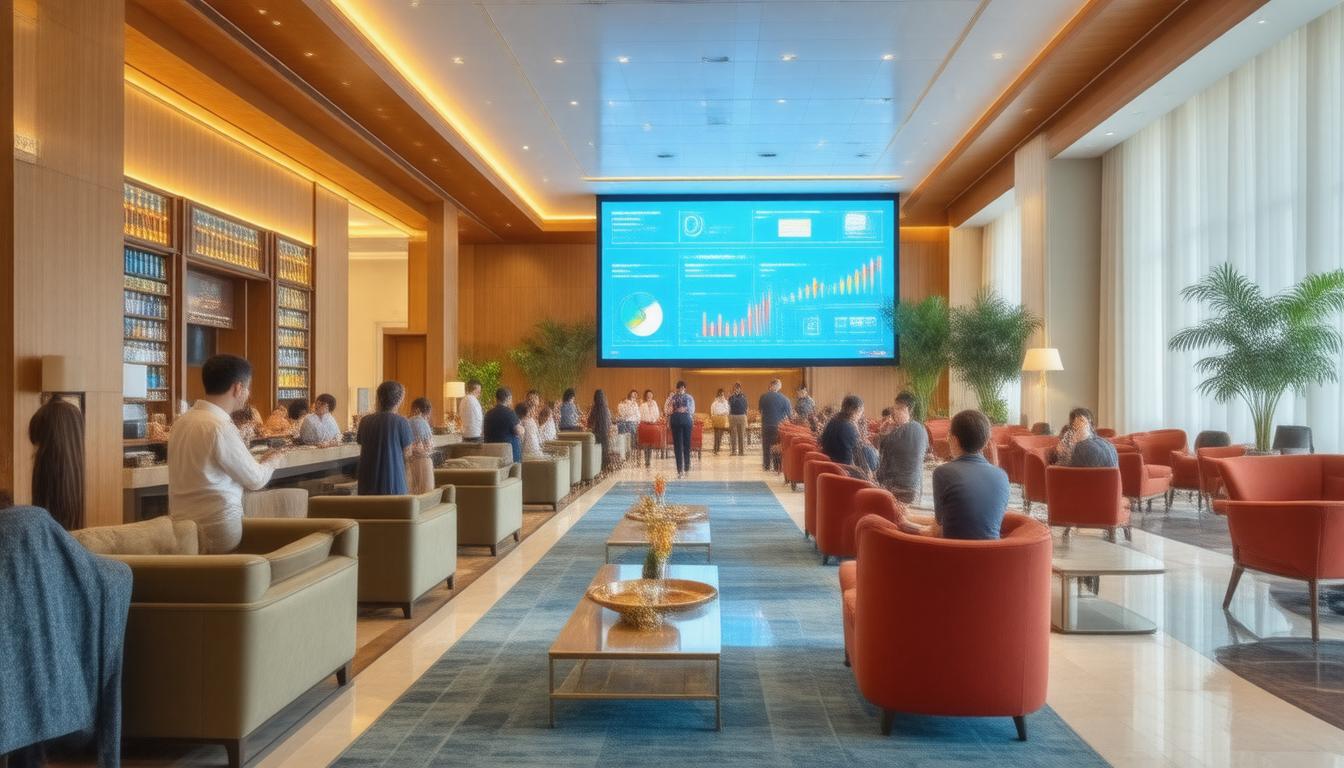Maximizing Revenue: Essential STR Profitability Benchmarks Every Hotel Owner Should Know
In the competitive landscape of the hospitality industry, hotel owners are constantly seeking ways to optimize their operations and maximize revenue.
One crucial aspect of this financial strategy is understanding STR profitability benchmarks.
These benchmarks serve as vital indicators of a hotel’s performance, providing essential insights into various key performance indicators (KPIs) that can drive a hotel's success.
But what are these benchmarks and why are they so important?
In this article, we will delve into the essential STR profitability benchmarks that every hotel owner should know, exploring how metrics like Average Daily Rate (ADR), occupancy rates, and Revenue Per Available Room (RevPAR) impact overall profitability.
Additionally, we'll discuss effective strategies to improve these benchmarks and drive more revenue to your business.
Key Takeaways
- STR profitability benchmarks are crucial for evaluating hotel performance.
- Key Performance Indicators (KPIs) provide insight into profitability metrics.
- Average Daily Rate (ADR) significantly influences total revenue generation.
- High occupancy rates are essential for achieving overall hotel profitability.
- Implementing strategies to enhance RevPAR can lead to improved financial outcomes.
Understanding STR Profitability Benchmarks
Understanding STR profitability benchmarks is essential for property owners and investors looking to optimize their short-term rental (STR) performance.
These benchmarks provide valuable insights into how your STR compares against the industry standards, helping you gauge profitability and make informed decisions.
STR profitability benchmarks typically include metrics such as revenue per available room (RevPAR), occupancy rates, and average daily rates (ADR).
By analyzing these factors, you can identify trends within your market, recognize areas needing improvement, and develop strategies to maximize your rental income.
Whether you're managing a single property or a portfolio of short-term rentals, leveraging these benchmarks can lead to better decision-making and increased profitability.
The Importance of Key Performance Indicators (KPIs)
In the competitive landscape of hospitality and real estate, understanding and utilizing STR profitability benchmarks is crucial for success.
Key Performance Indicators, or KPIs, serve as essential tools that provide measurable insights into a hotel's performance, guiding management in making informed decisions.
These benchmarks focus on various aspects such as occupancy rates, average daily rates (ADR), and revenue per available room (RevPAR), allowing properties to assess their operational efficacy against industry standards.
By consistently monitoring these metrics, hotel managers can identify trends, optimize revenue streams, and effectively allocate resources.
Ultimately, leveraging STR profitability benchmarks through KPIs not only enhances financial performance but also fosters a culture of continuous improvement within the organization, paving the way for sustainable growth.
‘Success is not just about what you accomplish in your life, it's about what you inspire others to do.' – Unknown
Average Daily Rate (ADR) and Its Impact on Revenue
The Average Daily Rate (ADR) is a crucial metric in the hospitality industry that directly influences a hotel’s revenue performance.
By understanding how to measure and optimize ADR, hoteliers can align their strategies with STR profitability benchmarks, which provide a standard for assessing operational efficiency and financial success.
ADR represents the average revenue earned per occupied room and is calculated by dividing the total room revenue by the number of rooms sold.
Improving ADR can substantially boost revenue and profitability, as even a small increase can lead to significant financial impact, especially when considering occupancy rates.
By comparing their ADR against industry benchmarks provided by STR, hotel managers can evaluate their performance relative to competitors and identify areas for improvement.
Strategies such as dynamic pricing, tailored promotional offers, and enhancing guest experiences are pivotal in elevating ADR.
Ultimately, understanding the relationship between ADR and STR profitability benchmarks enables hoteliers to adopt informed pricing strategies that drive revenue growth.
Occupancy Rates: The Foundation of Hotel Profitability
Occupancy rates play a critical role in determining the overall profitability of hotels, and understanding STR profitability benchmarks can empower hotel operators to make informed decisions.
Essentially, occupancy rate refers to the percentage of available rooms that are occupied over a specific time period, and it significantly influences a hotel's revenue generation capabilities.
STR (Smith Travel Research) provides invaluable profitability benchmarks that aid industry professionals in evaluating their performance against competitors in the market.
By monitoring these benchmarks, hoteliers can identify trends, adjust pricing strategies, and enhance marketing efforts to boost occupancy rates.
Increasing occupancy not only maximizes room revenue but also improves ancillary revenue streams such as food and beverage sales and event bookings.
Therefore, leveraging STR profitability benchmarks not only helps in setting realistic occupancy targets but also in formulating strategies that ultimately lead to sustainable profitability in the highly competitive hospitality sector.
Revenue Per Available Room (RevPAR) Explained
Revenue Per Available Room (RevPAR) is a crucial metric in the hospitality industry, providing valuable insights into a hotel’s performance.
It is calculated by multiplying the Average Daily Rate (ADR) by the occupancy rate, or alternatively by dividing total room revenue by the number of available rooms.
Understanding RevPAR is essential for hotel managers, investors, and operators because it not only reflects a hotel's ability to fill its rooms but also indicates how effectively it is pricing its inventory.
By examining STR profitability benchmarks, which offer valuable comparative data across similar properties, hoteliers can gain a clearer perspective on their own performance.
High RevPAR figures suggest a hotel is doing well in terms of both occupancy and pricing strategy, while lower figures may prompt a review of operational practices or marketing strategies.
By keeping an eye on these benchmarks, hotel managers can make informed decisions that enhance revenue performance and optimize overall profitability.
Frequently Asked Questions
What are STR profitability benchmarks?
STR profitability benchmarks are standardized metrics used to measure the financial performance of hotels and short-term rental properties.
They help hotel owners understand how their properties are performing in comparison to competitors and the market overall.
Why are key performance indicators (KPIs) important for hotel owners?
Key performance indicators (KPIs) provide essential insights into various aspects of a hotel's operational efficiency and financial health.
They allow hotel owners to track performance, make informed decisions, and implement strategies to maximize revenue.
How does Average Daily Rate (ADR) affect hotel profitability?
Average Daily Rate (ADR) is a critical metric that represents the average revenue earned per occupied room.
A higher ADR typically indicates more revenue generation, contributing significantly to overall profitability.
What is Revenue Per Available Room (RevPAR)?
Revenue Per Available Room (RevPAR) is calculated by multiplying a hotel's ADR by its occupancy rate.
It measures how well a hotel fills its rooms and at what rate, making it a key benchmark for assessing profitability.
What strategies can hotels use to improve their profitability benchmarks?
Hotels can improve their profitability benchmarks by optimizing pricing strategies, enhancing marketing efforts, improving guest experiences to increase occupancy, and regularly analyzing performance data to make informed adjustments.









